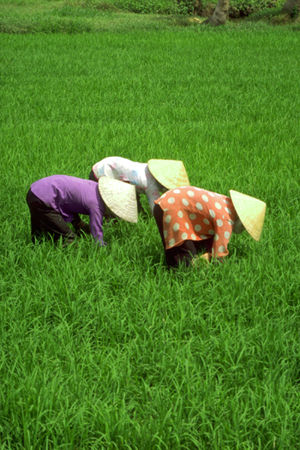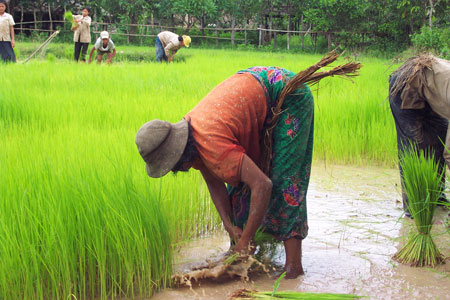The Year Of Rice

It is rare for the United Nations to devote a year to a single crop. In the past the tendency has been to nominate particular types of people each year. One was named for women, another for the disabled, then a year for indigenous peoples and for volunteers. But in a recent change in emphasis we celebrated water in 2003 and this year, rice. There is a continuity between the two. Water-systems make the growth rice possible and Diouf told the United Nations that ‘it is the staple food of more than half the world’s population and almost a billion household in Asia, Africa and Americas depends on rice systems for their source of employment and livelihood.’
In its declaration, the United Nations states that the ‘land and water resources for rice production are diminishing even as the world population continues to grow.’ The resolution to dedicate this year was presented to the United Nation Food and Agricultural Organization by 44 member nations. They are currently deeply concerned and predicting a pending crisis in supply. In addition they noted that ‘rice systems support a wide variety of plants and animals, also helping supplement rural diets and incomes. It is therefore in the frontline in the fight against world anger and poverty.’
It is the ambition of the United Nations to ‘engage the entire community of stakeholders, from rural farmers to the scientific institutions that mapped the rice genome, in the mission to increase its production in a manner that promotes sustainability and equity.’ However, to date, their officials have made no prediction as to whether or not they intend to go down the path of agro-chemicals and genetically engineered modifies crops. If they do, there is serious doubt these strategies would lessen hunger, but rather merely create new profit system.
Genetically engineered crops are patented -- that is owned by foreign multinational companies. You have to pay but in will be captive to these companies when their own traditional seeds disappear. This will especially be true if their plans to promote the ‘terminator seeds’ -- those which don’t reproduce -- are introduced. Each time farmer’s plant they will have to buy the new seeds.
This will mean increased poverty for farmers and huge profits for the seed companies. Genetically engineered crops need herbicides to be successful. This is bad for the soil and for the rice, as both will be contaminated. If rice is life then genetically engineered rice is death for the rice farmers.
For the Philippines to survive, it needs to have a sustainable system of rice farming. Traditional varieties which have survived thousands of years are a priceless heritage and must be preserved. Organically grown traditional varieties, not reliant on expensive genetically engineered seeds and herbicides, are the best hope for a healthy, thriving Philippines. Rice is Life.

